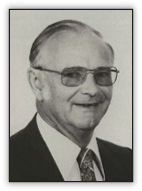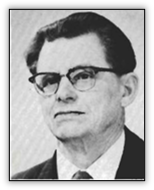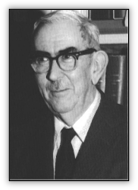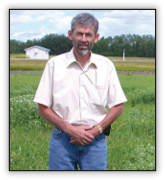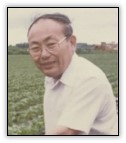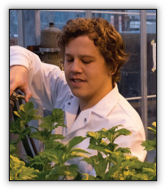Bringing our history alive
Remembering our colleagues who have passed: 1979-present
In the end, it’s not the years in your life that count. It’s the life in your years.
—Abraham Lincoln
- Lorne Clayton Callbeck (1912-1979).
- Gordon J. Green (1920-1982)
- Bjorn Peturson (1894-1984).
- J.-C Perrault (1905-1988).
- Ibra Lockwood Conners (1894-1989)
- Arthur (Art) J. Skolko (1912-1989)
- Frank Harper (1929-1991).
- Jeffrey Drew Smith (1922-2003)
- Lloyd Victor Busch (1918–2004).
- Gordon Albert Nelson (1925-2005)
- Zenon Alexander (Pat) Patrick (1924–2010).
- Tom Grisedale Atkinson (1929–2012).
- Richard “Dick” Ian Hamilton (1930–2012).
- Ralph Howard Estey (1916–2014).
- Colin Douglas McKeen (1916–2014).
- Rudra Prasad Singh (1940–2015).
- Prithwi Raj Verma (1940–2015).
- Richard Stace-Smith (1924–2017).
- William Robert Jarvis (1927–2018).
- Robin A.A. Morrall (1940-2018).
- Chuji Hiruki (1931-2021).
- William Lloyd Seaman (1934–2021).
- Stephen Reynolds (1993-2022).
- Susan M. Boyetchko (1959–2023).
- Donald Harder (1939-2023).
Lorne Clayton Callbeck (1912-1979)
Lorne Callbeck received his early education in Charlottetown and graduated with honours from Prince of Wales College in 1933. He continued his education at Nova Scotia Agricultural College, receiving a Diploma (Honours) in 1936, and a BS (Honours) from the Macdonald College of McGill University in 1938. In 1927, Lome began teaching courses chemistry and agriculture for at the Prince of Wales College and also worked as a summer student at the Experimental Farm in Charlottetown. In 1943 he joined the Research Branch of Agriculture Canada and worked on the epidemiology and control of late blight of potatoes until his retirement in 1976.
Lorne was widely known for developing modern methods of top killing of potatoes, and for developing potato disease loss assessment methods. During the early part of his research on late blight, he observed that blight appeared in cull piles about two weeks before it appeared in fields. This observation led to a provincial government program to eliminate sources of late blight infection by burying all cull potatoes. Lome was also responsible for the initiation of a weekly blight forecast which notified Island potato producers when to begin spraying their potatoes for late blight. During his career he evaluated hundreds of chemicals to determine their efficacy for foliage and tuber blight control. Lome was one of the early workers who observed the benefits of top killing potatoes before harvest and got the practice established. Lome cooperated with scientists at the Research Station in Fredericton, New Brunswick, in evaluating late blight resistance of breeding materials, and with scientists from Fredericton and Ottawa in determining the quantitative relationship between extent of late blight in potato crops and losses in tuber yields. During his career, he published nearly 40 papers in scientific journals and many articles in popular farm periodicals. For his contributions, Lorne received the Award of Merit by the Canadian Horticultural Council on the occasion of its 60th anniversary in 1972. In 1977, Lome was made an Honorary Associate of the College of the Nova Scotia Agricultural College.
In addition to his agricultural research accomplishments, Lome Callbeck was a noted historian and author. He wrote two books on Island history: ‘The Cradle of Confederation’, published in November, 1964; and, ‘My Island, My People’, published in November 1979, where he traced the Island’s history from its discovery in 1534 by Jacques Cartier up to his own early childhood. He one of the co-authors of ‘Canada’s Smallest Province’, published by the Prince Edward Island Centennial Commission in 1973. Lome also wrote numerous historical articles for the Atlantic Advocate magazine. In 1979, he was appointed a director of the Prince Edward Island Heritage Foundation. Lome also served as an elder in the St. James Presbyterian Church and a member of the church choir.
Gordon J. Green (1920-1982)
Gordon J. Green was born in Winnipeg and after graduation from Kelvin High School in 1937, he was employed by Manitoba Pool Elevators until 1941. He then served with the Royal Canadian Air Force until the end of the war in 1945. He went on to obtain a BS in Agriculture at the University of Manitoba in 1949 and a PhD in plant pathology with Dr. J.G. Dickson at the University of Wisconsin in 1953.
Gordon joined the Research Branch of Agriculture Canada in Winnipeg as a research scientist associated with Dr. Thorvaldur Johnson, specializing in cereal rusts. His research was directed to the breeding of stem rust resistant wheat cultivars in Canada that have protected the Canadian crop from stem rust losses for over 25 years. Additionally, Gordon also influenced research and scientific thinking about cereal rusts throughout the world and made important contributions to our understanding of the inheritance of virulence in Puccinia graminis. He was also instrumental in developing a flexible system of nomenclature for the cereal rusts that is now widely used in North American and abroad. He authored or coauthored more than 130 scientific and technical papers.
Gordon served with the Canadian International Development Agency in Kenya, Tanzania, and Brazil and spent one year as a visiting scientist with CSIRO in Sydney, Australia. He also served as honorary professor at the University of Manitoba and supervised Ph.D. students. There was nowhere he enjoyed more than his laboratory.
His outstanding contributions to science were recognized when he was awarded the Public Service of Canada Merit Award in 1976.
Gordon served as president of the CPS from 1980 to 1981. Additionally, the CPS initially named its Outstanding Young Scientist Award the Gordon Green Outstanding Young Scientist Award in his honour.
He enjoyed weekends at the cottage, skiing and bird hunting.
Bjorn Peturson (1894-1984)
Bjorn (Barney) Peturson was born on March 9th, 1894, not long after his parents had emigrated from Iceland. After graduation from Gimli High School, he served with the Canadian Navy during WWI. After the war, Barney trained as a teacher and taught public school in western Manitoba from 1921 to 1924. He eventually pursued his interest in plant science at the University of Manitoba, graduating with his BS in 1928; he was awarded the Isbister Scholarship for highest standing in his third and fourth years. Barney continued his studies at the University of Minnesota, graduating with an MS in plant pathology in 1929. He joined Agriculture Canada in Winnipeg as a seasonal employee in 1925 and became a permanent employee at the Dominion Rust Research Laboratory in Winnipeg in 1929. He returned to the University of Minnesota to complete his PhD in 1952.
Barney was one of the pioneer rust scientists in Canada, conducting research on physiologic specialization in oat crown rust and flax rust, the effect of environment on disease reactions, epidemiology, chemical control, and adult plant resistance until his retirement in 1960.
Barney was also an avid athlete and won numerous medals for wrestling, running, high jumping, and swimming at the Icelandic Festival and became the Winnipeg wrestling champion in his weight class in 1922. During his undergraduate years he was a member of the University football team and later became a charter member of the Pembina Curling Club, pursuing that interest for 45 years. He was an enthusiastic gardener, specializing in gladioli and dahlia, and was active in the horticultural community as an advisor on gardening problems.
J.-C Perrault (1905-1988)
Jacques-Champlain Perrault a fait ses études à Oka et à La Pocatière avant de poursuive un baccalauréat et une maîtrise-ès-sciences du Collège Macdonald. Sa carrière a débuté au laboratoire de Sainte Catherine, Ontario, où il est devenu phytopathologiste adjoint jusqu’en 1930. Cette année-là coïncide avec le début de la dépression économique. Champlain succède à J.-N. Racicot au poste de directeur du modeste laboratoire de pathologie végétale, situé à proximité de la ferme expérimentale de La Pocatière construit par le gouvernement canadien en 1923. Cette époque fut marquée par des bas salaires, un maigre budget pour le laboratoire et des chemins d’accès fermés durant tout lhiver jusqu’au printemps. Vers 1937, ses collègues R.-O. Lachance, J.-L. Laporte, A. Payette et R. Pelletier, sont venu lui prêter main forte au laboratoire.
Au début de la guerre en 1940, les chercheurs, professeurs et étudiants s’enrôlent dans le Canadian Officers Training Corps. Champlain se joint au régiment de Montmagny au printemps 1940, puis en devient le commandant de 1944 à 1946. Il est ensuite promu major de l’armée de réserve.
À l’époque, tout n’allait pas pour le mieux du coté des maladies des plantes. B. Baribeau a découvert un flétrissement bactérien de la pomme de terre au Québec et R. Latulippe lance la culture du lin dans la région, deux productions qui ont donné du travail à plein temps aux phytopathologistes. Après de nombreux travaux de recherche sur le flétrissement bactérien, Champlain a présenté sa thèse de doctorat en 1946 à la Faculté des sciences de l’Université Laval.
Perrault, de concert avec E. Campagna, A. Scott et E. Godbout, ont fondé en 1933 à Saint-Roch-des-Aulnaies, la Parmentière, une ferme expérimentale incluant un centre de recherche consacré à la culture des pommes de terre. En août de la même année, l’intrépide Latulippe
escorte C. Perrault, A. Scott et G. Gauthier sur le bateau «Champlain» afin de poursuivre une enquête scientifique de Pointe-Lebel à Havre-Saint-Pierre, sur la Côte-Nord du Québec. Après la dernière guerre, les provincialistes sont attirés par les conditions de travail intéressantes du gouvernement fédéral et les scientifiques se font aussi plus nombreux. On voit se greffer au noyau initial R. Paquin, H. Généreux, A. Hamel, J. Coulombe et J. Santerre. Une nouvelle cellule se forme avec J. Duncan et R. Couture. Vers 1950, le modeste laboratoire est détaché physiquement de la ferme expérimentale et le Dr. Perrault, bon gré mal gré, lève la première pierre du nouveau laboratoire des sciences érigé en 1952. L’équipe accueille ensuite R.A. Lachance, M. Lepage et plusieurs autres chercheurs. Par un curieux revers des événements, 1960 marque le début de la révolution «tranquille». Ottawa unit ce qu’il avait désuni. Le laboratoire des sciences et la ferme expérimentale sont fusionnés sous la direction du Dr. Perrault. Un peu plus tard, les chercheurs sont attirés par le Provincial et l’Université Laval. Les cadres de la Station de recherches vont former un nouveau centre à Sainte-Foy en 1967. Champlain a pris sa retraite en 1968.
Clamplain Perrault a accepté la présidence de l’Ordre des agronomes du Québec en 1962. Il est membre fondateur de la CPS-SCP. Il est décoré de l’Ordre du Mérite agronomique en 1966. Au cours de sa carrière, il a dirigé la Société de protection des plantes du Québec ainsi que la Société canadienne de phytopathologie de 1952-1953. Il a représenté le Ministère fédéral de l’agriculture à l’Office provincial des recherches scientifiques. Il a guidé et conseillé ses collègues avec une fermeté empreinte de grande bonté. Sa dernière contribution scientifique a été de coopérer à l’ouvrage de F. Hudon sur l’Action agronomique au Québec: Son Histoire – Son oeuvre, édité en 1987. Il a vécu vingt ans d’une retraite paisible à Sainte-Foy et à Baie Saint-Paul.
Ibra Lockwood Conners (1894-1989)
Ibra Conners started as summer student in 1916 at the Agriculture Canada Lab in St. Catharines surveying for white pine blister rust. During the summer of 1919, he worked as a barberry scout under Dr. E.C. Stakman of the University of Minnesota. His MS thesis, under the direction of Prof. J.H. Faull at the University of Toronto, was on the biological specialization of Puccinia coronata on grass hosts. In 1920, he moved to the Department of Agriculture’s field station at Brandon, Manitoba and shortly thereafter, undertook a PhD program at the University of Minnesota, but he never submitted a thesis. Back in Brandon, he conducted studies on the biology of Ustilago bullata on western rye grass and find alternatives to formalin for its control, completed a study on the plant rusts in the Prairie Provinces in the herbarium of W.P. Fraser at the Saskatoon Research Station, and tested cereal varieties for smut resistance. In 1925, he transferred to the Agriculture Canada Research Station at Winnipeg, working with A.H.R. Buller and Guy Bisby at the nearby Manitoba Agricultural College and nearly a dozen plant pathologists at the Dominion Rust Laboratory. In 1929, Ibra transferred to the Central Experimental Farm in Ottawa to prepare the reports on the occurrence of plant diseases published in the Canadian Plant Disease Survey and to curate the mycological herbarium. In 1939, he took on the duty of approving fungicides and fungicide-insecticides for registration under the Pest Control Act, a responsibility he held until he retired in 1962. He became assistant to the chief of the Botany Division in 1953. His retirement was scheduled for 1959, but the Department extended his service primarily to encourage the completion of the book An Annotated Index of Plant Diseases in Canada.
Ibra kept active during his retirement. He published the book Plant Pathology in Canada for the Canadian Phytopathological Society in 1972. He moved to West Lafayette, Indiana, in 1978 and assisted in the Herbarium at Purdue University and with bibliographical searches on rust fungi for Hennen’s Flora Neotropica project. In 1981, following an extended ‘vacation’ in Hawaii, he coauthored the Checklist of Plant Diseases in Hawaii.
Ibra was a Charter member of the CPS in December 1929 and served as its President from 1937 to 1938. He maintained an intense interest in the CPS and proudly attended its 50th annual meeting in 1979.
Ibra’s dedication and accomplishments were recognized in several ways: in 1974, Ibra’s colleagues marked his 80th birthday by dedicating Nos. 21-40 of Fungi Canadenses to him; the Canadian Botanical Association in 1979 presented Ibra Conners with the prestigious George Lawson Medal for his “distinguished contribution to the advancement of Canadian botany”; in 1987, Ibra was named Honorary Member of the Ottawa Field Naturalists’ Club in recognition of his contributions to the Club and to Canadian mycology.
“(I am unsure where I heard this story so if it is inaccurate, please alert me so I can change this entry). Because Ibra Conners was compiler of the Canadian Plant Disease Survey and was involved in regulatory approval of fungicides and nematicides, he knew most of the pathologists in Canada. Additionally, as Assistant Head of the Botany Division in the Department of Agriculture in Ottawa, he travelled frequently, by train from coast to coast, to sit with scientists to discuss their individual programs and do their appraisals. This process took considerable time and effort but was considered essential as part of the effective coordination among research programs in the Department. Imagine that happening today! It was this personal connection that Conners had with most pathologists in Canada during these trips across Canada that enabled him to write the book Plant Pathology in Canada published in 1972. I was able to publish the sequel to his book in 2010, Plant Pathology in Canada 1970-2008 only with the help of the following eight contributors, Verna Higgins, Guil Ouellette, Lu Piening, Bud Platt, Dick Stace-Smith, Jack Sutherland, Ron Wall and Roy Whitney and two technical editors, Bill Jarvis and Richard Gugel!”
-Denis Gaudet
“The first meeting of the CPS that I attended was the 50th Anniversary Meeting held in Lethbridge in 1979 in conjunction with the APS Pacific Division annual meeting. I had the pleasure of meeting the CPS charter members Ibra Conners, Melvin Cormack, Bill Broadfoot, A. W. Henry and Cecil Yarwood who were honoured at the meetings.”
-Denis Gaudet
Arthur (Art) J. Skolko (1912-1989)
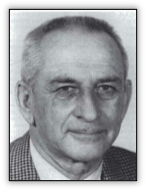
Arthur (Art) John Skolko was born in Toronto, the son of a Polish-Russian tailor. He attended the University of Toronto for all his post-secondary education: a BS in Forestry in 1935, an MA in 1939, and a PhD under the supervision of Herbert Jackson in 1943. His thesis research for his doctorate was titled A cultural and cytological investigation of a two-spored Basidiomycete, Aleurodiscus canadensi, n. sp.
Art’s major contribution to the advancement of plant pathology in Canada was predominantly administrative. Dr. Craigie, Chief of the Division of Botany and Plant Pathology, assigned to Art the responsibility for forest disease research in the Maritime Provinces and in the spring of 1946, he set up his research laboratory within the Department of Biology of the University of New Brunswick.
Soon after, he was transferred to Ottawa and in October 1948, Art was made Head of the Seed-borne Disease Section of the Division of Botany and Plant Pathology. He established an extensive program of seed testing and surveys of disease and insect pests to establish losses thereby enabling Canada to establish future research needs and priorities in Canadian agriculture and forestry.
During his time as Research Coordinator and Chairman of the Canada Department of Agriculture Extra-mural Committee, he initiated a program to match the education of students in plant pathology with the number of projected positions required in the future. He played a significant role in the reorganization of the Research Branch and in the expansion of programs and staff after the WWII.
Art served as President of the Canadian Phytopathological Society from 1957 to 1958.
“Back in the early 1990s shortly after Art Skolko’s passing, I was approached by Lloyd Seaman, a colleague of Art’s, to deal with filing cabinets filled with government and CPS documents collected during Art’s long career. We decided that these documents were historically valuable because of Art’s key positions in shepherding growth of Canadian research and of the Canadian Phytopathological Society. We approached Archives Canada and eventually established an extensive holding of historical documents covering a good portion of the history of plant pathology in Canada. This holding continues to receive contributions today. This key event also was foundational to developing my interest in the history of plant pathology in Canada.”
-Denis Gaudet
Frank Harper (1929-1991)
Frank Harper was born in Calgary, Alberta but completed all his early schooling in Lethbridge. After graduating from high school, he worked for a year as a washing machine repair man, but subsequently went to Edmonton to earn a BS in agriculture at the University of Alberta. After graduating, Frank obtained a job at the Agriculture Canada Research Station in Lethbridge, but after a few years, he took an educational leave to return to the University of Alberta for an MS degree, and ultimately to Iowa State University for a PhD in plant pathology. Upon completion of his studies, he accepted a research scientist position in Lethbridge. He eventually became head of the plant pathology section at the Research Station in Lethbridge, a position he held until his retirement in 1984.
An extensive irrigation system that was established in Southern Alberta by early settlers permitted intensive production in a diversity of crops. To meet the challenge of the increased disease pressures of this unique production system in Canada, Frank worked on diseases in irrigated peas, sugar beets, potatoes, barley, and rye. He studied the etiology and control of Pythium spp. and Fusarium solani root rot diseases of peas and sugar beets. He also established the prevalence and impact of ergot on rye production in Alberta. With Gordon Nelson, Frank contributed to characterizing the spread of bacterial ring rot in potato fields and the effects of potato leaf roll virus on potato yields, and in 1975, he and Bill Berkenkamp devised a growth-stage key for Brassica spp. (canola) that is still being used today. Frank was also instrumental, along with Tom Atkinson, in establishing the Western Committee on Plant Disease Control in 1976 and served as editor for the annually updated “Guidelines for Plant Disease Control in Western Canada” until 1980.
Frank was active in the Lethbridge Naturalists Society and served on local and provincial boards of the Federation of Alberta Naturalists and John Howard Society. He learned to weave and used his woodworking skills to build and repair spinning wheels and looms for the Lethbridge Weavers Guild. He was an avid golfer, curler and traveller.
Jeffrey Drew Smith (1922-2003)
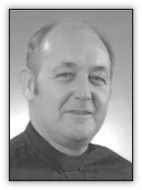
Jeffrey Drew Smith, better known as Drew, was an international authority on turfgrass diseases. Born in England, he served in North Africa and Italy during WWII. He went on to complete his BS at Kings College, University of Newcastle in 1946 and his MS at Aberdeen, Scotland in 1959.
Drew worked the majority of his career at the Agriculture Canada Research Station in Saskatoon. He also worked in Yorkshire, Aberdeen, Scotland, in New Zealand, Oregon, Norway, England, and Kenya, which provided him with new ideas, contacts, and sources of inspiration.
Drew published hundreds of research papers, technical bulletins, and extension articles, and the book Fungal Diseases of Amenity Turf Grasses, 3rd edition., which provided detailed information on the identification, biology, and management of fungal pathogens of turfgrasses. The Canadian Phytopathological Society recognized the value of this book by awarding him the Dr. and Mrs D.L. Bailey Award in 1990.
In addition to his research, Drew taught several courses on turfgrasses and diseases in the Horticulture Department at the University of Saskatchewan.
Drew was ordained as a priest of the Anglican Church of Canada in 1976 and served his church and community in a wide variety of roles throughout the years. He was an avid gardener, traveller, photographer, painter, and writer.
“Drew was a world traveller. He once gave an invited talk to the Plant Pathology Society of Alberta in the mid-1980s entitled “Peregrinations of a Peripatetic Plant Pathologist” where he provided highlights of his career in turfgrass pathology. The presentation was interesting, thoughtful and insightful. The part on snow moulds of turfgrasses was inspirational to me as a newly minted plant pathologist who ended up spending his entire career studying snow moulds.”
-Denis Gaudet
Lloyd Victor Busch 1918–2004
Lloyd Victor Busch completed a BS in 1942 at the Ontario Agricultural College (OAC) in Guelph, that was an associate college of the University of Toronto. He then joined the Signal Corps of the Royal Canadian Army stationed in Guelph from 1942 to 1946 were he achieved the rank of Second Lieutenant. Following World War II, Lloyd remained active in the 11th Field Artillery Regiment Reserve, where he rose to the rank of Major. After the war, Lloyd was appointed Lecturer at OAC and went on to complete a MS in plant pathology at the University of Toronto in 1949 and his PhD in plant pathology at the University of Wisconsin in 1956. Lloyd returned OAC for almost all of his career, initially as lecturer from 1946 to 1956, and as a faculty member from 1957 to 1983.
During his long career at the University of Guelph, Lloyd contributed to understanding and management of diseases in ornamental, vegetable, and field crops. He was a leading authority on wilt diseases caused by Verticillium species in several crops, including alfalfa, potato, and chrysanthemum. He made important contributions to the understanding of the cytology and physiology of wilt diseases and on how Verticillium species affect their host and contributed to the development of wilt-resistant varieties of alfalfa in Canada. Lloyd hosted the 5th International Conference on Diseases Caused by Verticillium Species in Guelph in 1986. He also worked on the diagnosis and management of potato diseases and was one of the first to use aerial surveillance in potatoes to detect and estimate the impact of diseases on crop yield. Lloyd retired from the University of Guelph in 1984 after 38 years of teaching and research in plant pathology.
Lloyd was an active member of The Canadian Phytopathological Society for 46 years and served as President in 1975 and was active on numerous committees. He also served on the Executive of the John McCrae Society, formed by Guelph citizens to restore and preserve the birthplace of John McCrae. He was a member of the Senate of the University of Guelph and remained active in several other scientific and horticultural organizations. Lloyd also served as a member of the Board of Directors of the Canadian Chestnut Council from 2001 to 2003.
Following retirement, Lloyd remained an active gardener maintained his interests in horticulture and agriculture, including the reforestation of a portion of a 100-acre farm in Ontario. Lloyd Is remembered by former students as an excellent role model, and by family, friends, colleagues as a gentleman, a scholar, and a proud Canadian
Gordon Albert Nelson (1925-2005)
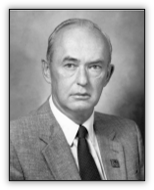
Gordon Nelson was born in Bentley, Alberta in 1925. He completed his BS and MS in dairy science at the University of Alberta in 1949 and 1951, respectively, and subsequently accepted a position in the Plant Science Department. Under the mentorships of A.W. Henry and G.B. Stanford, then Director of the Agriculture Canada Plant Pathology Laboratory in Edmonton, Gordon pursued a PhD in Plant Pathology at the University of South Dakota under the direction of Dr. George Semenuik (a former student of A. W. Henry) on bacterial wilt of alfalfa.
After graduating in 1961, he worked for Agriculture Canada in St. John’s, Newfoundland from 1961 to 1966 as a potato pathologist and served as a sessional lecturer at the Memorial University from 1963 to 1965. In 1966, Gordon transferred to the Lethbridge Research Station where he served as the potato pathologist until his retirement in 1989.
Demonstrating the seed-borne nature of the potato ring rot pathogen, its latency in tubers and persistence on surfaces of storage areas, soil, and plant debris, were among Gordon’s most notable contributions and essential to potato seed production and certification systems now used worldwide. He showed that apical-tip culture could be used to free plants of the bacterial ring rot pathogen breeding programs.
Gordon loved the outdoors and volunteered with the Mountain Bluebird Society and worked to promote bluebird populations on the western slopes of the Rockies. He was involved in his church and with the Independent Order of the Odd Fellows service organization.
“I worked alongside Gordon for several years before his retirement and knew him well into his retirement. He was a very serious individual and often presented a stern exterior but people who knew him recognised his good-hearted nature. He was meticulous in his research which enabled him to make the important scientific discoveries on the epidemiology ring rot of potatoes, a very difficult pathogen to work on. He had a wry sense of humour and loved to drop by and tell a joke then stop again to elaborate on the first joke or tell a second for good measure.”
-Denis Gaudet
Zenon Alexander (Pat) Patrick 1924–2010
Following graduation with a BS from McGill University in 1948, Zenon (Pat) Patrick began his long career in plant pathology, starting as a PhD student with Professor D.L. Bailey at the University of Toronto. Upon graduation in 1952, Pat accepted a position as Research Scientist with the Agriculture and Agri-Food Canada in Harrow, Ontario. There, he identified that phytotoxic substances from the microbial decomposition of root residues as the cause of the peach replant problem.
In 1965, following the retirement of Professor D.L. Bailey, Pat returned to the University of Toronto as Professor of plant pathology and plant pathologist for the Horticultural Research Institute of Ontario at Vineland Station. The latter ‘honorary’ position was a unique arrangement in which Pat spent 24 years during the summer at the Vineland Station with graduate students and undergraduates in a field course that combined research and extension. This enabled Pat’s teaching and research program to be highly successful because it allowed for field studies to be pursued from the university campus in the heart of a large city. In the classroom, as in the field, Pat’s dedication to showing students fresh specimens, and conveying his excitement and enthusiasm for plant pathology attracted numerous young biologists into the profession.
Pat became internationally recognized for his contributions to the study of complex interactions in soil, especially allelopathic mechanisms. This pioneering work led to further investigations in which Pat showed that these decomposition products had an array of effects on plant disease, from enhancing the disease in some systems to controlling disease in others. These results have taken on new significance with the current popularity of minimum tillage agriculture. Related research led to a better understanding of the ecology of soil-borne fungi, including a unique type of predation of fungal spores by soil amoeba and the extensive colonization of fungal hyphae by bacteria. Pat’s research interests were always split between his basic research efforts and the more immediate needs of growers. Hence, Pat continued a collaboration, begun by Professor Bailey, with tomato breeder Ernie Kerr, on leaf mould of tomato, helping to follow the evolution of new races of Cladosporium fulvum and to screen for new genes for resistance. In the extension arena, disease problems ranged from mushroom culture to peach canker and blue mould of tobacco. Pat was always his happiest in the field and his easy rapport with growers resulted from an honest concern for their welfare, combined with a bit of humour.
Pat served the Canadian Phytopathological Society as an Associate Editor of the Canadian Journal of Plant Pathology, as a member and co-chair of the Biological Control Committee, and as a member of the original Committee on the History of the Society. In 1993, Pat was awarded the Dr and Mrs D.L. Bailey Award for his published work on allelopathy with special emphasis on his last review published in the Canadian Journal of Plant Pathology.
Tom Grisedale Atkinson (1929–2012)
Tom Atkinson was born and raised in Vancouver, BC and completed a BS at UBC in breeding and plant pathology. During that time, he worked for three summers at the Canada Department of Agriculture Experimental Farm at Agassiz, BC, for Doug Taylor, the barley breeder. Tom continued his studies in cytogenetics at the University of Saskatchewan, completing his Master’s degree under B. C. Jenkins and his PhD at the same university under Michael Shaw on powdery mildew on barley. Following graduation in 1956, he accepted a postdoctoral position under Paul Allen at the University of Wisconsin to study spore germination inhibitors in Puccinia graminis f. sp. tritici. In 1958, Tom returned to Canada, accepting the cereal pathologist position at the Lethbridge Research Centre to replace virologist John Slykhuis.
Tom’s research at Lethbridge centred on Wheat streak mosaic virus (WSMV) and common root rot of wheat. The solid-stemmed characteristic in wheat varieties is necessary in the south-western prairies because it imparts resistance to the wheat stem sawfly. Tom demonstrated that this resistance trait was linked to high susceptibility to common root rot and developed protocols for screening wheat lines in field and greenhouse trials aimed at improving resistance to common root rot. Along with Ruby Larson and Hugh Mackenzie, he demonstrated that the common root resistance in the variety ‘Apex’ resided on chromosome 5B and could be successfully transferred to the susceptible solid-stemmed wheat S-615. He also collaborated on surveys to establish the incidence and severity of common root rot in cereals in western Canada, as well as research to establish the effects of crop rotations on reducing disease severity. Tom also worked on vector-based resistance to WSMV and documented the WSMV epidemic in 1964.
Tom became Head of the Plant Pathology Section in 1978, Assistant Director of the Lethbridge Research Centre from 1980–1983, and Director of the Cereal Research Centre in Winnipeg from 1983–1990. He returned to retire in Lethbridge where he continued to be active with the Federal Superannuates National Association – Southern Alberta Branch during the 1990s. Tom worked to enhance the recreational use of the Oldman River Valley and to protect it from development. He was involved with the research and construction of Fort Whoop-Up, for which he was recognized with a Lethbridge Kinsman Merit Trophy in 1968. He was skilled at carpentry, flower arranging, bonsai and photography. Tom spent many leisure hours hiking in the mountains and, in his later years, the local river valley.
Tom was a coauthor, with John Martens and Lloyd Seaman, of the first edition of Diseases of Field Crops in Canada, a highly successful publication of the Canadian Phytopathological Society. He was also instrumental, along with fellow pathologist Frank Harper at Lethbridge, in establishing the Western Committee on Plant Disease Control. Tom joined the Canadian Phytopathological Society in 1952 and remained an active member until he retired.
Richard “Dick” Ian Hamilton 1930–2012
Richard (Dick) I. Hamilton was born in Montreal in 1930, obtained a BS degree in Agronomy at Montana State University (MSU) in 1953, and MSc and PhD degrees at the University of Nebraska in 1956 and 1960, respectively. His PhD dissertation, under the direction of Bill Allington and mentorship of Myron Brakke and Ellen Ball, was on the purification, stability and serology of Bromegrass mosaic virus (BMV), Prune dwarf virus, and Prunus necrotic ringspot virus. In 1960, Dick returned to MSU and joined the faculty in the Department of Botany and Bacteriology. His serological work on Barley stripe mosaic virus (BSMV) led to the development of a rapid serological test for this virus that was adopted by the Seed-Testing Laboratory at MSU.
In 1967, Dick moved to McGill University, where he became the first plant virologist in the Department of Plant Pathology. He developed a graduate course in plant virology and an undergraduate course in virology. His research program, including supervision of graduate student projects, focused on seed transmission of plant viruses and interactions between viruses in mixed infections. Work with Southern bean mosaic virus established that seed transmission was not via embryo infection but from virus held in the seed coat, where the virus underwent in-vivo modification as the seed dried. He also demonstrated that barley plants infected with BSMV became susceptible to high-titer systemic invasion by Tobacco mosaic virus (TMV), a virus that normally remained subliminally present in only inoculated leaves when in single infection in barley.
In 1972, Dick joined the Virus Chemistry and Physiology section of the Vancouver Research Station of Agriculture Canada. His research continued to focus on the interaction of unrelated viruses and virus strains in mixed infections and the transmission of viruses by seed and pollen. Dick’s research resulted in detection and quantification of a significant proportion of the RNA genome population of TMV within capsids assembled from BSMV structural proteins, the phenomenon known as genomic masking or transcapsidation. His lab also demonstrated that BMV, as well as BSMV, could facilitate the systemic movement and infection of cereals by TMV, that contaminated pollen may play a role in the plant-to-plant spread of some plant viruses, and the presence of virus particles and virus-induced inclusions in the embryonic cells of soybean seeds infected with Tobacco ringspot virus, a proof of true embryo infection. Dick also collaborated with the International Institute of Tropical Agriculture (IITA) in Nigeria and countries in western and southern Africa to use monoclonal antibodies to detect and control viruses of major African food crops. In another project, funded by the International Board for Plant Genetic Resources in Rome, he ensured a critical diagnostic test could be made available quickly to address the challenge of a mixed virus infection that was causing a serious disease of sweet potato, an essential staple, in tropical Africa.
Dick served as associate editor and senior editor of Phytopathology and as chairman and member of the Virology Committee and the Seed Pathology committee of the American Phytopathological Society. He also served as chairman of the Plant Virus Subcommittee of the International Committee on Taxonomy of Viruses and has served on the Program Committee of the International Congress of Virology. He was an active member of the International Working Group on Legume Viruses. He also served on the Editorial Board of the Annual Review of Phytopathology. He was elected as a Fellow of the American Phytopathological Society. While serving as President (1993-1998) of the International Society of Plant Pathology, he approached the Program for Monitoring and Reporting Emerging Diseases (ProMED) affecting human and animal health, to include outbreaks of plant diseases in their alerts.
Dick also served as associate editor of the Canadian Journal of Plant Pathology, was President of the Canadian Phytopathological Society (CPS) from 1985 to 1986 and was instrumental in bringing the 6th International Congress of Plant Pathology to Montreal in 1993. For his service to the CPS, he was elected as a Fellow of the Society in 1991.
Dick felt a deep spiritual connection with music and the wilderness and was committed to helping others, both professionally and in his personal life, through numerous charitable activities.
Ralph Howard Estey (1916-2014)
Ralph Howard Estey was born on December 9th, 1916, in the town of Millville, New Brunswick. He skipped high school because it was 48 km away from home but passed the Normal School entrance exam at the age of 23 and graduated with a first-class teacher’s diploma. Ralph’s first teaching assignment was in a rural school class of 32 students covering eight grades. He was later involved in teaching and training during World War II and taught industrial design for four years after his military service. He obtained a BS degree in general agriculture from McGill University in 1951, an MS in mycology and plant pathology from the University of Maine, and a PhD from McGill in 1956, conducting research on crown and root diseases of red clover caused by both nematodes and fungi. In 1960, Ralph obtained a BEd degree from the University of New Brunswick and while on sabbatical in 1965, he earned a Diploma of the Imperial College (DIC) in nematology from University of London. The completion of five university degrees from somebody who never attended high school is an unusual and remarkable academic path.
Ralph began teaching in 1956 at the University of Connecticut, but he soon accepted a faculty position in Department of Plant Pathology at Macdonald College in McGill University in 1957. He served as Department Chair from 1970 to 1976 and added a nematology course, a first in a Canadian university; he also added the first graduate mycology course at Macdonald College.
Ralph’s research path was also somewhat unique, spanning two very different areas, namely mycology and nematology. In mycology, Ralph and his group investigated vesicular-arbuscular mycorrhizal fungi, nematophagous fungi, and destructive mycoparasites, studying their diversity, biology, and potential application as biofertilizers and microbial biocontrol agents. In a study published in Nature, Ralph and his co-author T.H.A. Olthof were the first to report the production of a nematotoxin by the nematophagous fungus Arthrobotrys oligospora.
Ralph’s passion for history started early in his career when he converted the course History of Plant Pathology from a reading-only to a full lecture course. Consequently, he reviewed the careers and accomplishments of eminent Canadian plant pathologists or mycologists such as H. Fletcher, A. H. R. Buller, W. P. Fraser , and J. Dearness. He reviewed the history of mycology in Canada for the Fifth International Mycological Congress in Vancouver (Can. J. Bot. 1994), and in the journal Phytoprotection, he covered various historical topics such as phytopathology in Quebec (1970), plant pathology teaching at McGill University (2007), the Québec Society for Plant Protection (2008), and the use of aircraft in plant protection in Canada (2004). His most significant legacy, as a historian, was his Essays on the Early History of Plant Pathology and Mycology in Canada (1994), a comprehensive book with research funded by the Social Sciences and Humanities Research Council of Canada, which he brought to the finish line at the printer by using some of his own savings as a guarantee for the publication. In addition to about 70 scientific and historical papers in peer-reviewed journals, Ralph contributed many articles and even limericks to various newspapers, magazines and newsletters. He had a full-page column in the monthly ‘Macdonald Farm Newsletter’ for several years.
Ralph’s service to the Canadian Phytopathological Society was substantial. He worked with Carl Halchuk, then chief graphic artist at Agriculture Canada, to produce the logo that is still used by CPS-SCP. He was President of CPS-SCP in 1978-1979, the year the Canadian Journal of Plant Pathology was first published, premiering the brand-new logo. This logo portrays the role of humans (agriculture) in promoting plant disease: plants exist in nature in balance with plant diseases (green leaf in the background) but with human intervention (the human hand), diseases become impactful (the diseased leaf in green and white on the hand). The fact that this logo still has a modern look and remains relevant 35 years later demonstrates the foresight and vision in its design. Ralph’s experience in industrial design gained during the 1940s still impacts our Society positively.
Ralph was honoured as a CPS-SCP Fellow (1986) and given a Lifetime Achievement award from the CPS-SCP (2003). He was also a Fellow of Linnean Society of London, a lifetime member of the European Society of Nematologists, a Fellow and Honorary member of the Quebec Society for the Protection of Plants (QSPP), and a Charter Member of the Society for Nematologists. He received the Lifetime Achievement award from QSPP in 2008. A new nematophagous genus from Taiwan, Esteya, attacking the pinewood-nematode Bursaphelenchus xylophilus, was named in his honour.
Colin Douglas McKeen (1916-2014)
Colin McKeen was born on a farm near Strathroy, Ontario, on June 23rd, 1916. He received his BA degree from the University of Western Ontario in 1938, winning the Gold Medal in Botany. He obtained his MA in 1940 and PhD in 1942, both under the supervision of Dr. D.H. Bailey at the University of Toronto. Following graduation in 1942, Colin enlisted with the Royal Canadian Corps of Signals and served as a Lieutenant while stationed in London, England, during World War ll. From 1945 to 1946, he conducted postdoctoral studies with Dr. Bailey before joining the Harrow Research Station of Agriculture Canada in 1946 to work on diseases of vegetable crops.
Colin’s plant pathology research involved fungi, viruses, bacteria, and nematodes, and he also studied the synergism between plant pathogens. His research on the management of diseases of greenhouse tomato and cucumber was instrumental in helping to establish a greenhouse industry southern Ontario. He became Head of the Plant Pathology section of the Harrow Research Station in 1962 and, in 1973, moved to Ottawa as Coordinator of Crop Protection Coordination for Agriculture Canada. In these positions, he stimulated the development of plant pathology in Canada at both provincial and national levels. He retired in 1978.
Following retirement, Colin became involved in saving American chestnut and founded the Canadian Chestnut Council (CCC) in 1988, serving as the Chair for 19 years. The CCC remains very active in the restoration of American chestnut in Canada, and the chestnut breeding nursery at Tim Horton Onondaga Farms, St. George, Ontario, is dedicated in Colin’s memory. In recognition of his contributions, Colin was inducted into the Essex County Agricultural Hall of Fame in 2012.
Colin served the Canadian Phytopathological Society with distinction from 1947 to 2014. He was President of the Society from 1969 to 1970 and facilitated publication of the historical treatise Plant Pathology in Canada by I.L. Conners by the Society in 1971. Colin also served as the first Editor of the Canadian Journal of Plant Pathology. In 1979, he was invited to address the plenary session of the CPS Golden Anniversary meeting in Lethbridge, Alberta. Colin was honoured as the first Fellow of CPS in 1981.
Rudra Prasad Singh (1940-2015)
Rudra Prasad Singh was born the youngest of five children in the small village of Saraiya, Uttar Pradesh, India, on 1 September 1940. Pursuing education as a means to support his family, he received a BS in 1959 and an MS in 1961, both in agriculture, from Agra University in India. Rudra then immigrated to North America in 1962 to pursue a PhD at North Dakota State University where he began work on the agent responsible for potato spindle tuber disease, later known as potato spindle tuber viroid (PSTVd). Rudra demonstrated that PSTVd was transmitted through pollen and true potato seeds, a first for potato diseases. Following the completion of his doctoral studies in 1966, Rudra went to Agriculture Canada in Fredericton where he worked under R. H. Bagnall as a postdoctoral fellow from 1966 to 1967.
Following his postdoc, Rudra accepted a full-time position at Fredericton and continued his work on PSTVd. His studies led to the co-discovery of the then-unique type of subviral infectious agent, termed ‘viroid’ in 1971. Following this foundational work, the study of viroids has had profound implications in the fields of molecular and evolutionary biology, and plant pathology. Rudra also pioneered the ‘return’-polyacrylamide gel electrophoresis (R-PAGE) procedure that has become the standard for detection of PSTVd and other viroids by agricultural agencies around the world. The use of this procedure in field surveys for PSTVd in the Maritime Provinces later led to the eradication of this important disease across Canada, the first reported national eradication of a plant virus/viroid disease in the world. Rudra also worked on potato virus Y (PVY), one of the most economically damaging agricultural viruses worldwide in the last few decades. He developed procedures for collecting and handling potato samples for detecting viruses by enzyme-linked immunosorbent assay (ELISA). His research was critical in recognizing the emergence of the necrotic strain PVYN in eastern Canada in the early 1990s and to understanding the genetic and pathological diversity of PVY strains in recent years. He and colleagues developed novel RT-PCR methods for the specific detection of different strains of PVY, and an important multiplex PCR method for high-throughput screening of six distinct potato viruses in single samples. Many of these techniques for differentiating PVY strains and for simultaneous detection of multiple viruses are now widely used around the world for studying the evolving viruses of potato. Indeed, through his experience working with and developing standardized detection techniques for PSTVd, PVY, Potato leafroll virus (PLRV), and other viruses, Rudra was instrumental in the establishment of the first seed certification laboratory in Canada. While at AAFC, Rudra acted as head of the Pest Management section for four years. After 40 years of research service, Rudra retired from AAFC in 2008.
Over his long and successful career, his achievements were recognized by a number of awards and honours that included: Outstanding Service Award by the New Brunswick Seed Potato Growers’ Association (1990), the PVYN Research Award, PVYN Eradication Leadership Award by the Prince Edward Island Potato Board (1993), the Commemorative Medal for the 125th Anniversary of Canadian Confederation by the Government of Canada (1994), Honorary Fellow of the Indian Potato Association (1997), the AGCELLENCE Award by Agriculture and Agri-Food Canada (1998) for exceptional accomplishments in research, the Bio-Atlantech Biosciences Award (2004) and an Honorary Life Membership in the Potato Association of America (2009). He served on numerous editorial board for many journals, including the Canadian Journal of Plant Pathology, Phytopathology, and Journal of Virological Methods.
During his career, Rudra authored over 225 research papers and review articles. He also co-edited four books: Molecular Methods in Plant Pathology (CRC Press); Pathogenesis and Host Specificity in Plant Diseases – Volume I Prokaryotes, Volume II- Eukaryotes, and Volume III– Viruses and Viroids (Science Ltd).
Rudra received the Award for Outstanding Research in 1997. He served as Editor in Chief of the Canadian Journal of Plant Pathology from 1989–2001. For his exceptional service to CPS, he was named Fellow in 2002.
“Rudra and I both obtained our PhD at North Dakota State University under the supervision of Dr Richard (Dick) Kiesling though Rudra started and finished 16 years before me. For those who are not familiar with the controversy at the time, viroids were co-discovered by Rudra Singh and Theodor Diener at the USDA and their publications came out at the same time in 1971. Because Diener’s publication was heavily promoted by himself, Rudra’s report was largely ignored in the USA. Dr. Diener was subsequently nominated to the National Academy of Sciences in the USA and received numerous other prestigious awards. This situation vexed Dr Kiesling who would insist that Rudra should share equally in the recognition. Such is life when competing with the Americans. Ask Canadian hockey fans!!”
-Denis Gaudet
Prithwi Raj Verma (1940-2015)
Prithwi Raj Verma was born to a rural farmer’s family on January 10th , 1940, in a small village of the Jaipur district in Rajasthan state, India. He obtained a BS degree in agriculture from the University of Rajasthan in 1961 and an MS in plant pathology from the University of Udaipur in 1967. He worked as a demonstrator in the Department of Botany, SKN College of Agriculture, Jobner, from 1961 to 1967. In 1968, Prithwi Raj moved to Canada to pursue a PhD degree in plant pathology at the University of Saskatchewan, which he completed in 1973.
After his PhD, Prithwi Raj accepted a postdoctoral position at Agriculture Canada in Saskatoon from 1973 to 1976, studying white rust disease of rapeseed-mustard, and he was subsequently hired as a research scientist working on Cochliobolus sativus cereal diseases. He studied the effects of seed and root exudates on germination of conidia and the interaction of abiotic stresses on disease development. In 1981, Prithwi Raj switched to oilseed crops, studying the development of Albugo candida and the identification of sources of disease resistance. He and the canola team licensed the first white rust resistant variety of canola in Canada, ‘Tobin’, in 1980. Prithwi Raj also contributed to the understanding and management of Rhizoctonia and Sclerotinia diseases of canola. He authored and coauthored over 100 research papers, reviews, book chapters and the three monographs on ‘White Rust’, ‘Alternaria blight’ and ‘Downy Mildew’ of crucifers.
Prithwi Raj was a consultant with the CIDA and IDRC on research projects of rapeseed-mustard in India and Bangladesh and trained many scientists from these countries in his laboratory in Saskatoon. He left the Saskatchewan Research Centre in 1997 and returned to India. There, he established the Guman Devi Woman Scientist Award for the best graduate student research papers. For his service to plant pathology, he was presented with a ‘Ratna’ award from the Indian Society of Mycology and Plant Pathology in 2002 and the Lifetime Achievement Award from the Society of Rapeseed-Mustard Research, Bharatpur, India in 2012. He also served as Chief Editor for the Journal of Oilseed Brassicas. He coauthored the book White Rust of Crucifers: Biology, Ecology and Management published by Springer International.
Richard Stace-Smith (1924-2017)
Richard (Dick) Stace-Smith was born in Creston, British Columbia. He received his BS in Agriculture in 1950 from the University of British Columbia. While still an undergraduate, he was hired as a student assistant with the Dominion Laboratory of Plant Pathology (Vancouver Research Centre (VRC)), , located on the UBC campus, and this had a profound influence on his career direction. After graduation, Dick was hired as a plant pathologist, with the assignment to study virus diseases of small fruits. Almost immediately, he took educational leave to attend Oregon State University, where he completed his PhD in Plant Pathology in 1954 on virus diseases of raspberry. At the VRC, he characterized the aphid-transmitted viruses that cause the raspberry mosaic complex. His areas of research expanded during his career, and he worked on virus diseases of berry crops, tree fruits, potatoes, and other horticultural crops. With Norman (Bud) Wright and Francis Mellor, he developed the heat treatment and meristem-tip culture method for virus elimination, which eventually led to the development of the premier virus-free potato seed programme in North America. For this work, his team in the Virology Section received the Merit Award, Public Service of Canada, in 1972.
Dick was appointed as an adjunct Professor in the Plant Science Department at UBC and contributed greatly to teaching an undergraduate course in plant pathology. Along with the other virologists at the VRC, he developed a new graduate course in plant virology for graduate students enrolled in both UBC and Simon Fraser University. This course attracted graduate students from across Canada, with the scientists at the Research Station serving as lecturers and thesis research advisors.
During his career, Dick undertook four sabbatical work transfers: the Scottish Crops Research Institute in Dundee, Scotland, in 1958; the Glasshouse Crops Research Institute in Littlehampton, England, in 1970; the Jamaican Ministry of Agriculture in 1976; and the Victoria Plant Research Institute in Burnley, Australia, in 1981. Dick retired from the VRC in 1989, after 39 years of service, however, he continued to work on plant viruses until the Centre closed in 1996.
Dick served as secretary/treasurer of the Canadian Phytopathological Society from 1964-1966 and as president of CPS from 1981-1982. Dick was recognized for his research and contributions to plant pathology by being named a Fellow of the CPS in 1987. He also served as president and a director of the Pacific Division of the American Phytopathological Society (APS) and as chairman of the Virology Committee; he was awarded Fellow of the APS in 1983. Other awards include the International Award in Virology from the International Society of Horticultural Sciences in 1997. In 1999, his work for Vancouver Natural History Society, BC Naturalists’ Foundation, VanDusen Botanical Garden, Brock House Society, and Fraser River Coalition among others was recognized with the award of the Order of British Columbia.
Everyone that worked with Dick was impressed with his sense of humour, positive can-do attitude, and the real joy he got out of his work and co-workers. His love of nature and travel took him worldwide. Around his West Point Grey neighbourhood, he was known for his fruitful and productive garden which he generously shared with all.
William Robert Jarvis (1927–2018)
William (Bill) Robert Jarvis was raised on a farm in Olney, England. Following a short stint in the Royal Air Force, he earned a BS (Honours) in botany from the University of Sheffield in 1951, a PhD in plant pathology from the University of London, and a Diploma of the Imperial College of Science and Technology (D.I.C.). He accepted a position at the Institute of Biology in 1954. In his early career, Bill valued the mentorship of Professors John Webster and William Brown, who instilled in him an unfailing curiosity and enthusiasm about fungi and plant diseases that would persist throughout his 40-year career. During that time, Bill developed expertise on the taxonomy, biology, ecology, and control of the grey mould pathogen Botrytis cinerea. He accepted a research position as Principal Scientific Officer (Mycology Section) at the Scottish Horticultural Research Institute at Invergowrie, Dundee. He worked there for 20 years, mainly on Botrytis grey mould of several berry crops and on root and fruit diseases of fruit and vegetable crops caused by several other fungi. During this time, Bill participated in work transfers at the Department of Plant Pathology at the University of California, Berkeley from 1963 to 1964, and at the Plant Diseases Division of the Department of Scientific and Industrial Research in Auckland, New Zealand from 1969 to 1970. Bill extended his interest in fungicides and the impacts of latent infections by investigating the effects of environmental conditions and the influence of timing of application on fungicide efficacy.
In 1974, Bill accepted a position as Head of Plant Pathology at the Agriculture Canada Research Station in Harrow, Ontario, which he held until his retirement in 1994. There, he became an expert on integrated disease management and the biology and control of fungal diseases on greenhouse vegetable crops, mainly tomato and cucumber. He published the monograph Botryotinia and Botrytis Species: Taxonomy, Physiology and Pathogenicity, which became an important foundation for research on Botrytis throughout the world. While at Harrow, Bill also became a pioneer and leader in biological control research in Canada, working with an Ampelomyces hyperparasite on powdery mildew of greenhouse cucumber. In the early 1980s, he began research into the role of companion planting lettuce or dandelion with tomato as a way of biologically controlling fusarium root rot diseases of greenhouse tomatoes. He patented a Pseudozyma yeast and with Richard Belanger at Laval University and Plant Products Ltd in Brampton, Ontario, registered the first biological control agent in Canada for fungal disease management.
His book Managing Diseases in Greenhouse Crops, published by the American Phytopathological Society Press in 1992, has become a widely read textbook for researchers, extension specialists and students throughout the world. He also made many contributions to Diseases and Pests of Vegetable Crops in Canada, published in 1994 by The Canadian Phytopathological Society and the Entomological Society of Canada. He served an Associate Editor for the Canadian Journal of Plant Pathology, Associate and Senior Editor for Plant Disease, Editor for Horticultural Research, and a reviewer numerous international scientific journals.
In his leisure time, Bill enjoyed reading, gardening, hiking, and family. He belonged to the Amherstburg Horticultural Society, advised on period gardening for Park House, and wrote an illustrated pamphlet on the history of gardening in Canada. He and his wife volunteered at a local historic home and living museum where he mastered and demonstrated the arts of blacksmithing and tinsmithing.
Robin A.A. Morrall (1940-2018)
Robin Morrall was born on December 15th, 1940, in Llandrindod Wells, Wales, where his family had moved to escape the bombing blitz of London during World War II, and grew up in the Reigate area in Surrey, England. He graduated in 1962 from the University of Cambridge where he received a BA degree in Natural Sciences. In 1964, Robin earned an MA degree in soil microbiology from the Biology Department at the University of Saskatchewan (USask) under the direction of T.C. Vanterpool. He began his professional career in plant pathology as a plant protection officer with the Canada Department of Agriculture in London, Ontario, in 1964. He then joined the Department of Biology at the University of Saskatchewan in 1965 as a term lecturer and was offered a full-time faculty position in 1966. In 1965, Robin was conferred an MA degree from the University of Cambridge. At USask, Robin proceeded to the rank of full professor in 1980. During his career, he supervised 11 MS and 9 PhD students. His students remember him as great mentor and a thoughtful scholar who wasn’t afraid to challenge colleagues and managers when needed. Robin was tough but always fair, and he was always eager to share a smile or a joke, often over a beer or two. He retired from the Department of Biology in 1997 but remained a Professor Emeritus until his passing.
Robin was recognized nationally and internationally for his work with Sclerotinia sclerotiorum, the causal agent of stem rot of canola and other crops. His pioneering work on the pivotal role of infected canola petals in the infection process led to a better understanding of the epidemiology and aetiology of this important disease. Based on this new information, a petal-based disease risk forecasting system for stem rot of canola was patented in the USA and Canada. Robin also conducted some of the first studies of fungicide efficacy for management of stem rot on canola, and his research served as the foundation for current fungicide-based management of sclerotinia stem rot of canola. Robin was also a recognized national and international authority on the epidemiology and management of foliar diseases lentils field peas, chickpeas, and faba beans, especially Ascochyta lentis and Colletotrichum truncatum. His pioneering studies on fungicides and disease resistance have served as the foundation for current disease management strategies across western Canada. He was recognised for his disease resistance work on pulses by the breeders at University of Saskatchewan who named the lentil cultivar, CDC Robin, after him.
Robin exhibited a special passion for research and teaching that was not restricted to his work at USask. He worked closely with individual farmers, extension staff, and industry personnel, and conducted a substantial portion of his research in farmers’ fields. Throughout his career, Robin was active in extension, working to provide farmers and industry with the latest and best information available on plant disease management. He was a co-editor Diseases of Field Crops in Canada.
Robin was an enthusiastic supporter of Canadian Phytopathological Society, serving as President in 1993-1994. He also served as Section Editor of the CJPP, collator of the Oilseeds and Special Crops section of the Canadian Plant Disease Survey from 1989 to 2016, and as national coordinator for CPDS from 1999 to 2016. His many contributions to the CPS and plant pathology in Canada were acknowledged when he was recognized as a Fellow of the CPS in 2000 and presented with the Award for Achievements in Plant Disease Management in 2004. He was inducted into the Saskatchewan Agricultural Hall of Fame in 2016.
Robin’s many interests outside work included advocating for French/bilingual education, marathon running, and ballroom dancing.
Chuji Hiruki (1931-2021)
Chuji Hiruki was born and raised in Fukue, Japan. He received a BS and PhD from Kyushu University and joined the University of Alberta as a plant pathology professor in 1966. Chuji was one of the most nationally and internationally recognized Canadian plant virologists of our time. His research focused on the characterization, identification, and control of economically important plant diseases caused by mycoplasmas (phytoplasmas) and viruses, and he played a lead role in characterizing the genus Dianthovirus. Chuji also successfully undertook the challenge of developing a virus-free seed potato production method that was adopted in Alberta and beyond. His program attracted many graduate students and postdoctoral fellows from around the world.
Some of his many awards include Fellow of American Phytopathological Societies, the U of A McCalla Professorship and Distinguished University Professor Award, a Royal Society of Canada Fellowship, the J. Gordon Kaplin Award for Excellence in Research, and an Honorary Membership in the International Society of Plant Pathology. Chuji’s international achievements were recognized with the prestigious Order of the Sacred Treasure, Gold Rays with Rosette, which was conferred on him by the Emperor of Japan in 2018. This award is intended to honour individuals who have made distinguished contributions in their respective field(s) of study. He was also recognized by the city of Fukue with a Distinguished Citizen Award.
Chuji loved flowers and gardening, photography, and traveling. He especially enjoyed cultivating and studying camellias. After his retirement, he researched the history of his hometown of Fukue and continued his involvement with flowers as the vice-president of the International Camellia Society.
Chuji served as president of Canadian Phytopathological Society from 1990 to 1991, was recognized by CPS as a Fellow in 1993, and received an Outstanding Research Award in 1996.
“I knew Chuji as a friend and colleague. He was an active member of the Plant Pathology Society of Alberta (PPSA) and I served with him on the CPS Board. He was passionate about virology and always modest about his contributions and his many awards of recognition.”
-Denis Gaudet
William Lloyd Seaman (1934-2021)
Lloyd was born in Charlottetown, P.E.I., and attended Prince of Wales College. Following graduation, he obtained a BS at McGill University (McDonald College) in 1956 and a PhD from the University of Wisconsin (Madison) in 1960. His PhD thesis, entitled “Variability in pathogenicity among isolates of Plasmodiophora brassicae”, was conducted under the supervision of R.H. Larson. Some of the cytological results of his graduate studies were published in the journal Nature. He then joined V.R. Wallen’s soil pathogens group in 1960 at the Canada Department of Agriculture, at the Central Experimental Farm in Ottawa, where he spent his career studying diseases of a wide variety of crops. Lloyd was also involved in the formation of the National Crop Loss Program initiated in the Branch in 1968. He retired from Agriculture and Agri-Food Canada in 1998.
In 1968, Lloyd succeeded D.L. Creelman as the editor for the Canadian Plant Disease Survey (CPDS). The editorial expertise developed during his tenure with CPDS was invaluable when the Canadian Phytopathological Society (CPS) launched the Canadian Journal of Plant Pathology (CJPP) in 1979 to which he was appointed as Technical Editor, a position he served in for 20 years until he retired. In the early 1980s, his experience was again called upon for the 1984 CPS book Diseases of Field Crops in Canada (J.W. Martens, W.L. Seaman, T.G. Atkinson, eds.). This book is a Canadian best seller. Lloyd also coedited the book Diseases and Pests of Vegetable Crops in Canada (R.J. Howard, J.A. Garland, W.L. Seaman, eds.). The book was released as an open electronic publication in 1998.
In recognition of his dedication, his tireless and exacting work, and his service to the Society, Lloyd was presented with the CPS Fellow (1985) and D.L. Bailey (1996) Awards. For these qualities, and for his leading role in key CPS publications, he is considered by many as the ‘heart’ of the CPS in modern times.
Lloyd was an avid outdoorsman and dedicated member of the 115th Scout Troop, enjoying canoeing in the summer and skiing in the winter. His friends and family recall his generosity, patience, and soft-spoken nature.
Stephen Reynolds (1993-2022)
Stephen Reynolds was a PhD Candidate at the University of Guelph in the Department of Plant Agriculture under the supervision of Dr. Mary Ruth McDonald. His research project was on celery leaf curl (caused by Colletotrichum fiorinae). According to friends and family, Stephen was inquisitive and known for his witty jokes, big smile, and generosity. Stephen enjoyed books, board games, music and nature. His volunteer activities included planting wildflowers throughout Windsor Essex and Guelph in support of native pollinators.
Susan M. Boyetchko (1959-2023)
Sue Boyetchko was born in Victoria, British Columbia, but spent her childhood in various locations in Canada and Europe in a military family. After high school, Sue attended the University of Alberta, where she earned a BS, MS, and PhD in plant sciences. Sue obtained a postdoctoral position on biological control strategies for weeds with Knut Mortensen at AAFC in Regina. She was hired as a Research Scientist focused on biocontrol at Regina in 1994. In 1995, her position was transferred to the Saskatoon Research and Development Centre, where she worked for 29 years.
Sue was passionate about her research in biocontrol. She and her team identified several bacterial strains for biocontrol, including: a) a strain of Pseudomonas fluorescens (BRG100) with potential as a bioherbicide for green foxtail, b) a strain of Pseudomonas chlororaphis that exhibited antibiosis against Phytophthora infestans in culture and strongly reduced late blight severity (several novel polyphenolic compounds in P. chlororaphis were identified that were responsible for this effect), and c) a Bacillus sp. strain that inhibited ascospore germination and sclerotium formation of Sclerotinia sclerotiorum (the mechanism involved in its efficacy was linked to the induction of systemic resistance in the canola plant). Sue was instrumental in developing the concept of an innovation chain for biopesticides that describes crucial steps in the development and commercialization of biopesticides, a system that has been widely adopted.
Sue was recognized for her research contributions with a team AAFC Gold Harvest Award in 2008. In 2012-2013, she was named a World Wide Who’s Who Professional of the Year in Agricultural Science and was also listed as one of the World Wide Who’s Who Five Top Female Executives.
Donald Harder (1939-2023)
Donald Harder grew up on his family’s farm in Rosemary, Alberta. His farming background and his curiosity of science spurred Don to pursue his BS at the University of Alberta (1958). Inspired by an interest in microbiology and by mentorship of A. W. Henry and Bill Skoropad, he branched into plant pathology. Don completed his MS at the U of A followed by a PhD at Washington State University in virology. He then accepted a post-doc position under Claude Bernier at the University of Manitoba. While working in Dr. Bernier’s laboratory, Don was recruited by the Canadian International Development Agency (CIDA) to the cereal rust project in Kenya. Upon his return to Canada in 1973, he assumed responsibility for research on crown rust of oats (Puccinia avenae) at Agriculture Canada in Winnipeg.
Don identified numerous new crown rust resistance genes from wild oat germplasm lines while working at Winnipeg. He formed a multidisciplinary team with James Chong, Sam Samborski, Roland Rohringer, and others to apply electron microscopy to study oat and stem rust haustoria in the host/rust fungal interface. Don also conducted a transfer of work with Kurt Mendgen at the University of Konstanz, Germany in 1981 to strengthen the expertise of the team. Their results elucidated the role of haustoria, not only as metabolite absorbing organs, but as specialized structures interacting with the host protoplasts to lead to host resistance or susceptibility. In 1981, Don assumed responsibility for the oat stem rust (P. graminis f. sp. avenae) program, where he isolated the adult plant oat stem rust resistance gene Pg17 and characterized gene Pg10, indicating its usefulness as a source of stem rust resistance in oat breeding. His program gradually expanded to include responsibilities on stem rust in oat, barley and wheat. He collaborated with wheat and oat breeders to register numerous cultivars and has contributed to all wheat, oat, and barley breeding programs in western Canada by evaluation of stem rust resistance in pre-registration trials.
During the later stages of his career, Don focused on the QCC strain of stem rust problem in barley, which had the potential to seriously impact barley production and producer returns in the eastern Canadian prairies and the Great Plains of the United States of America. With collaborating colleagues, post-doctoral fellows, and a graduate student, he was successful in identifying and characterizing new sources of resistance, elucidating the components of this resistance, developing molecular markers for resistance genes, assisting breeding programs to incorporate the resistance into adapted cultivars, and determining the levels of yield loss in cultivars varying in resistance to QCC. Throughout his career, Don was active on the PRRCG Evaluation Team for Wheat, Rye and Triticale.
Don served the Canadian Phytopathological Society as Secretary from 1987-1991 and as President during 1996-1997. He also served as associate editor of the Canadian Journal of Plant Pathology and the Canadian Journal of Botany and was an adjunct professor at the University of Manitoba.


